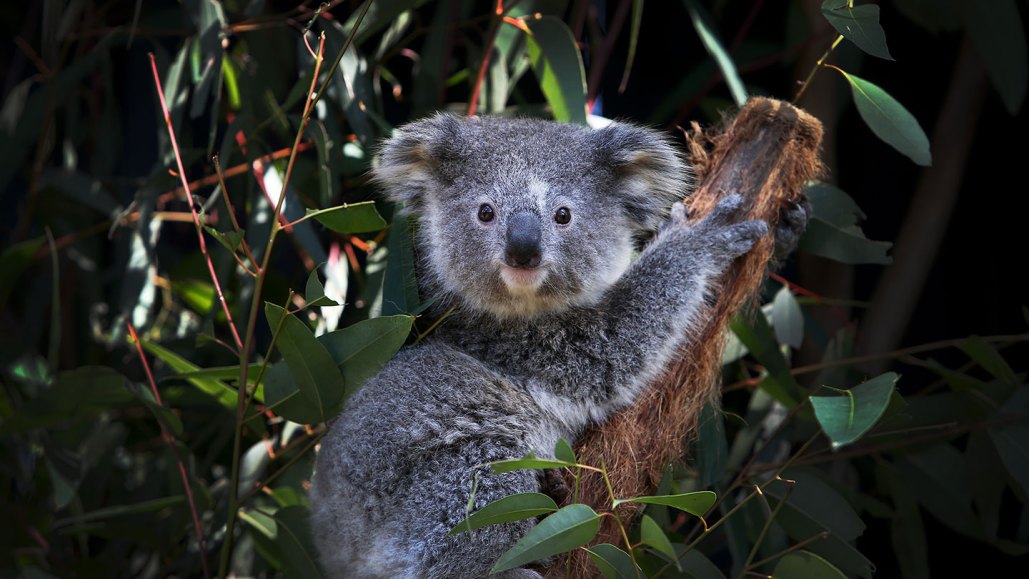A Simple Kitchen Gadget Might Aid in Koala Conservation Efforts

Known for their fluffy ears, round faces and big black noses, koalas spend most of their time snoozing in the canopies of eucalypt forests. Their penchant for perching high up and moving very little makes these Australian icons difficult to trace. But that could soon change thanks to a new technique that can “sniff” out koalas’ whereabouts.
The method, described October 13 in the Journal of Applied Ecology, captures DNA floating around the marsupial’s natural environment using filters made of cheesecloth, a gauzy fabric commonly found in kitchens.
Secured between two stainless steel plates, the cheesecloth filters were tested at 26 sites in four nature reserves across Queensland, Australia. Each site received two filters — one placed about 1.5 meters above the ground with a fan that mechanically drew in air, and another placed closer to the ground to trap any debris.
After a few days, researchers retrieved the filters and analyzed the genetic material trapped within. To their delight, the scientists identified koala DNA as well as DNA from eleven other species that are known to inhabit the area, including swamp wallabies (Wallabia bicolor) and ring-tailed possums (Pseudocheirus occidentalis).
Populations of koalas (Phascolarctos cinereus) have drastically decreased in recent years due to rampant bushfires and diseases. In 2022, the Australian government declared that koalas are endangered in some parts of the country. Conservation efforts have relied on sophisticated instruments including thermal imaging drones and acoustic recorders to detect koalas. The new DNA sampler is less expensive and requires fewer technical skills to operate, the researchers say.
“It is very simple,” says evolutionary biologist Celine Frere of the University of Queensland in Brisbane, Australia. “The idea is to get citizen scientists, private property owners and school students to go out and use the filters.”
The work adds yet another tool that scientists can use to detect environmental DNA, or eDNA. Other researchers have vacuumed the air in zoos and forests, swabbed vegetation and even scoured the filters of air pollution monitoring stations for eDNA.
“Some of the work in this particular study are really important first steps,” says ecologist Matthew Barnes of Texas Tech University in Lubbock. The experiment occurred in an uncontrolled environment, where there’s a lot of uncertainty — and a risk that strong winds or rains could affect the results. “The fact that they were still able to have some success is really encouraging,” Barnes says.
Frere and her team are now working on building a library of genetic data for various species, “so that we have a reference that enables us to use eDNA to its full power,” she says.




